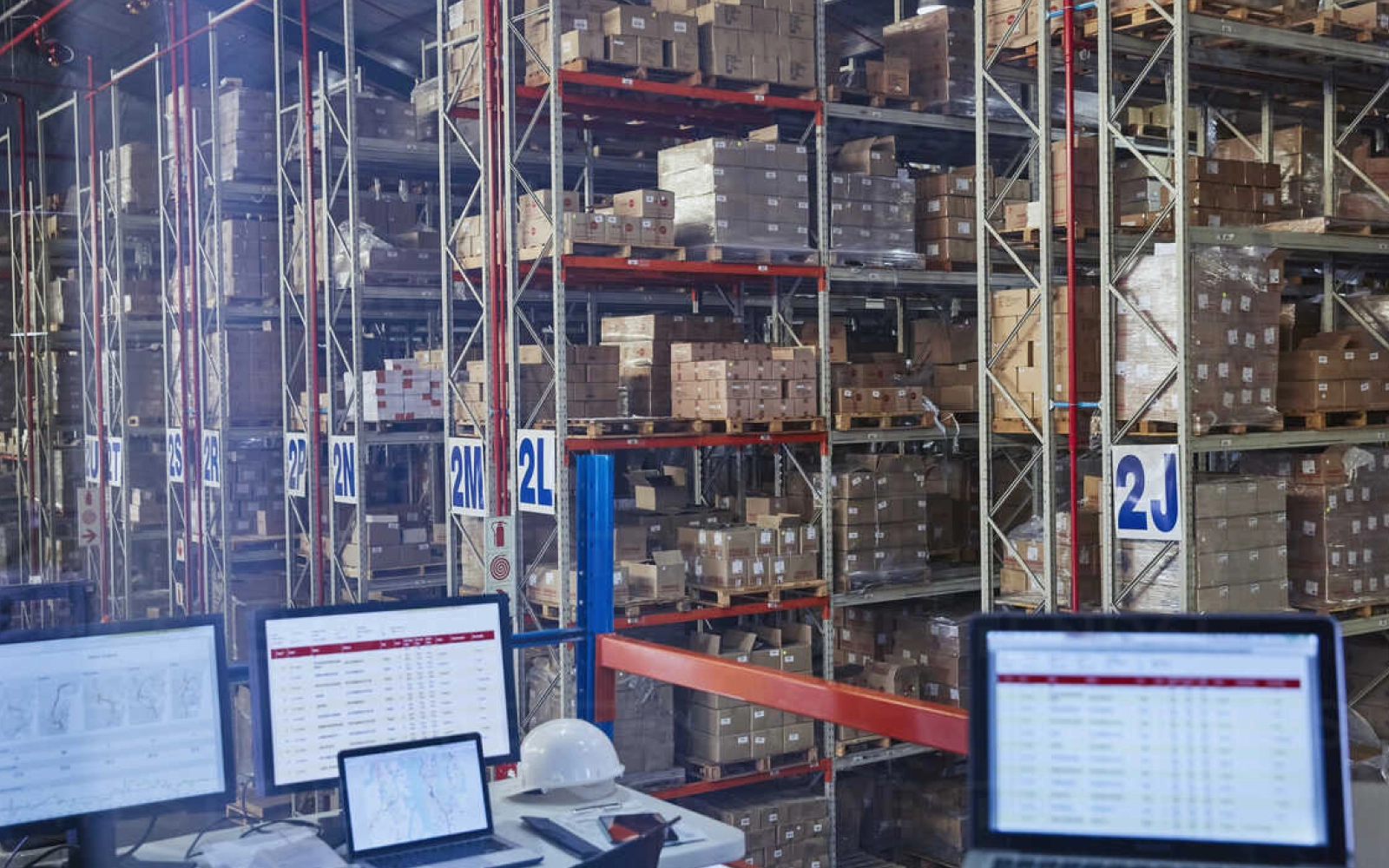Ever wondered how the modern retail landscape manages to stay so agile and responsive? The answer lies in advanced inventory optimization software, a tool transforming the retail industry. This technology streamlines inventory management, ensuring that products are in the right place at the right time. But what exactly is automated inventory management, and why is it crucial for today’s retailers? Does it answer why automation is the key to enhanced retail outcomes?
Let’s find out!
Unparalleled Impact of Inventory Optimization Software
Automated inventory management involves using technology to manage and optimize stock levels. This process leverages software to track inventory in real-time, predict demand, and automate replenishment. The goal is to maintain optimal stock levels—not too much, not too little, but just right. This precision is essential in a retail environment where customer demands and market trends shift rapidly.
However, despite automated inventory management’s apparent benefits, many retailers still rely on manual processes, leading to inaccuracies, inefficiencies, and a reactive approach to stock control. These issues result in overstocking or stockouts, both detrimental to business health. So, how does automation provide an added advantage in this scenario?
Tackling Retail Challenges with Inventory Replenishment Software
The retail industry, characterized by its dynamic nature and competitive environment, faces a myriad of challenges, particularly in inventory management. Efficient handling of inventory is not just about maintaining stock levels but also about aligning them with consumer demand and market trends. This is where inventory replenishment software becomes a vital asset for retailers, offering solutions to several key challenges.
Real-Time Data for Informed Decision Making
Inventory replenishment software is a powerhouse of real-time data, a critical component for effective inventory management in retail. Traditional methods, often plagued by delayed reporting and manual stock checks, cannot match the efficiency and accuracy of this technology. With access to up-to-the-minute inventory information, retailers make swift and informed decisions, a necessary capability in a market where trends and consumer preferences change overnight.
For example, a sudden spike in the demand for a specific product is quickly identified by the software, enabling retailers to reorder before stock depletion. Conversely, if a product shows a consistent decline in sales, the software alerts retailers to adjust their inventory levels, preventing overstocking. Additionally, inventory optimization software plays a major part in improving stock margins. This level of responsiveness creates a balance between customer satisfaction and revenue flow.
Streamlining Replenishment with Automation
Inventory replenishment software stands out for its capacity to recommend adjustments in stock levels, empowering retailers to establish and manage product-specific thresholds. This automation streamlines inventory management substantially, reducing the time and resources devoted to manual ordering processes and diminishing the likelihood of human error.
Simultaneously, it ensures a delicate equilibrium between overstocking and understocking, maintaining optimized inventory levels. Consequently, retailers sidestep the financial strains associated with excess inventory, including tied-up capital and storage costs. This efficient management of inventory not only leads to significant cost savings but also enhances the utilization of store and warehouse space, contributing to overall operational efficiency.
Leveraging Demand Analytics for Inventory Optimization
Inventory replenishment software excels in leveraging demand analytics to optimize inventory management. It analyzes historical sales data, market trends, and other relevant factors to suggest inventory allotment as per the consumer demand patterns. This information is invaluable for retailers to align their inventory with actual market demand.
Demand analytics play a crucial role in managing items with variable sales patterns, including seasonal products. By understanding past trends and current market data, retailers adjust their inventory proactively, preparing for anticipated changes in demand. This approach enhances the potential for increased sales and also enables retailers to take proactive steps to handle seasonal demand.
Elevating Business Prospects with AI Inventory Optimization
The advent of AI inventory optimization marks a new era in retail management. But why does automated inventory management result in better retail business prospects?
For one, AI-driven systems analyze vast amounts of data to identify patterns and predict trends. This insight allows retailers to optimize stock levels accurately, reducing carrying costs and increasing sales opportunities. Furthermore, AI enhances the customer experience by ensuring product availability, thus fostering loyalty and repeat business.
Conversely, a lack of automation leads to inefficiencies and missed opportunities. Retailers who rely on outdated methods find it challenging to compete in a market that values speed and accuracy. The imbalance in supply chain management, resulting from manual processes, is costly and detrimental to a retailer’s reputation and financial health.
Four Ways Automation Enhances Efficiency in Inventory
Automation in inventory management is revolutionizing the retail industry. Let’s delve into the four pivotal ways it boosts efficiency, ensuring that retailers stay ahead in the game.
Foundation of Reliable Inventory Management
Think about the traditional inventory management process–it’s often riddled with human errors from miscounts to incorrect data entries. Automation changes the game completely. With systems that automatically track and update inventory levels, the scope for error is drastically reduced. Imagine scanners and RFID technology working in tandem to ensure that every item is accounted for, down to the last unit. This precision is critical, not just for maintaining accurate stock levels, but also for laying a foundation of trust and reliability in inventory data. Retailers make purchasing decisions with confidence, knowing that their decisions are backed by accurate, real-time data.
Staying Ahead of the Curve
Moving on to demand forecasting–it’s like having a crystal ball, but better. Advanced algorithms analyze past sales data, market trends, and even socio-economic factors to predict future product demand. This foresight is invaluable as inventory optimization software utilizes that information to ease supply chain operations. Retailers now possess the capability to anticipate fluctuations in demand, enabling them to proactively adjust their inventory in alignment with these variations. The result? They’re always a step ahead, ready to meet customer demand. It’s about being prepared for the future, today.
Enhancing Time and Cost Efficiency
Consider the hours spent on manual inventory tasks–it’s time-consuming and, frankly, an inefficient use of resources. Automation liberates staff from these mundane tasks, allowing them to focus on more strategic aspects of the business. And let’s not forget the cost factor. By reducing errors, optimizing stock levels, and improving reorder efficiency, automation significantly cuts down costs associated with excess inventory, emergency orders, and even labor. This efficiency is not just about saving time and money; it’s about reallocating them to where they are to be used best.
Improving Reporting and Analytics
The role of inventory planner software in providing insightful analytics and reports cannot be overstated. With comprehensive data at their fingertips, retailers delve deep into sales patterns, seasonal trends, and customer preferences. This wealth of information leads to strategic decision-making. It enables retailers to tailor their inventory to match market demands, optimize marketing strategies, and even enhance customer experience. It’s not just about looking at numbers; it’s about understanding the story they tell.
Fact 💡
Did you know that 22% of companies identified supply chain disruptions as a key factor driving their adoption of automation?
Use Cases: The Power of Inventory Optimization Solutions
To further understand the impact of inventory optimization solutions, let’s consider some use cases:
- Rapid Response to Weather-Related Demand Changes: A home improvement store utilizes AI inventory optimization to adjust its stock levels in anticipation of extreme weather events. As a hurricane approaches, the system increases supplies of emergency items like batteries, flashlights, and generators.
- Cultural Event-Driven Inventory Management: A grocery store chain employs retail allocation software to cater to diverse cultural communities. During important cultural festivals, such as Diwali or Lunar New Year, the software adjusts inventory to include culturally relevant products like ethnic foods and decorations.
- Customized Stock for Local Sports Events: A sports merchandise retailer uses inventory replenishment software to capitalize on local sports events. When a local team reaches a significant playoff, the software automatically increases the stock of related merchandise to meet the expected surge in fan demand.
- Inventory Management for Pop-Up Retail Locations: A fashion retailer operating temporary pop-up stores uses AI inventory optimization to manage these transient locations effectively. The software quickly analyzes local trends and sales data to ensure the pop-up is stocked with the most popular and trending items.
- Managing Seasonal Tourist Demand in a Coastal Town: A beachwear and accessories retailer in a coastal town leverages retail allocation software to adjust its inventory with the changing tourist seasons. The system aligns stock levels with tourist influx, ensuring optimal supply of beachwear during peak season and reducing overstock in the off-season.
Embracing the Future with Dynamic Inventory Software
The shift towards automated inventory management is not just a trend; it’s a fundamental change in how retailers approach inventory control. This technology offers unparalleled advantages, from improved accuracy and efficiency to better customer satisfaction and financial performance. As the retail landscape continues to evolve, embracing these advancements is not just beneficial; it’s essential for survival and growth in a competitive market.
Frequently Asked Questions
Q. How does AI inventory optimization improve stock management in retail?
AI inventory optimization uses advanced algorithms and machine learning to analyze sales data, customer behavior, and market trends. This analysis enables retailers to predict future demand more accurately, ensuring they have the right products at the right time. This leads to reduced overstocking or understocking, better customer satisfaction, and improved sales.
Q. Can inventory replenishment software significantly reduce out-of-stock scenarios?
Yes, inventory replenishment software plays a crucial role in minimizing out-of-stock situations. By setting automatic reorder points based on sales patterns and stock levels, the software ensures timely reordering of products. This keeps inventory levels optimal, preventing stock shortages and maintaining continuous product availability for customers.
Q. What are the benefits of using retail allocation software in inventory management?
Retail allocation software enhances inventory management by ensuring that the right products are allocated to the right locations in the right quantities. This targeted approach improves stock distribution across various stores or channels, optimizing inventory levels, reducing carrying costs, and increasing the likelihood of meeting customer demand effectively.
Take the Next Step
Ready to transform your supply chain operations? Move to automation and always efficiently, accurately manage inventory so that you answer the consumer demand at the right time.
Impact Analytics InventorySmart™—Inventory planning software that ensures the right products get to the right place at the right time.





